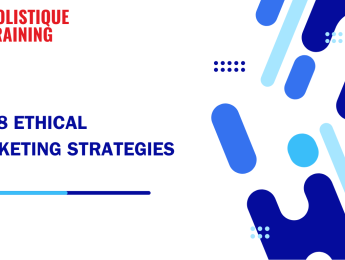- Table of Contents
- Introduction
- What is the Corporate Ladder?
- What Does It Mean to Climb Up the Corporate Ladder?
- Strategies to Climb the Corporate Ladder and Progress in Your Career
- 1. Continuous Learning and Skill Development
- 2. Establish Clear Career Goals
- 3. Seek Mentorship and Guidance
- 4. Demonstrate Leadership and Initiative
- 5. Build a Strong Professional Network
- 6. Adaptability and Resilience
- 7. Communicate Effectively
- 8. Develop Emotional Intelligence
- Statistics on Climbing the Corporate Ladder
- Tips for Setting Career Goals
- 1. Self-Reflection and Assessment
- 2. Define Long-term Objectives
- 3. Prioritise and Sequence Goals
- 4. Make Goals Specific and Measurable
- 5. Break Goals into Manageable Steps
- 6. Stay Flexible and Adjust as Needed
- 7. Maintain Motivation and Persistence
- 8. Utilise Tools and Resources
- 9. Visualise Success
- Table: Metrics to measure your progress in climbing the corporate ladder
- Potential Challenges of Climbing the Corporate Ladder
- 1. Increased Workload and Stress
- 2. Navigating Office Politics
- 3. Facing Potential Setbacks
- 4. Coping with Increased Visibility and Scrutiny
- Managing Expectations
- 5. Sustaining Motivation and Engagement
- In Conclusion
Introduction
Navigating the corporate world often feels like ascending a ladder—each rung representing a new challenge, responsibility, or achievement. Understanding how to climb this metaphorical ladder effectively can significantly impact your career trajectory. In this comprehensive guide, we'll explore what the corporate ladder entails, what it means to climb it, effective strategies for progression, and invaluable tips for setting and achieving career goals.
What is the Corporate Ladder?
The corporate ladder symbolises the hierarchical structure within organisations, where each level represents a different stage of authority and responsibility. Starting from entry-level positions, employees climb upward towards more senior roles, with each promotion typically offering greater challenges, rewards, and leadership opportunities.
What Does It Mean to Climb Up the Corporate Ladder?
Climbing up the corporate ladder refers to advancing within a company's hierarchy, progressively moving from entry-level to higher-level roles with increased responsibilities, influence, and compensation. This progression is often characterised by promotions, acquiring new skills, and taking on leadership roles. Each step up the ladder typically involves greater expectations, more complex tasks, and a higher degree of accountability. The journey is marked by continuous professional development, networking, and, often, the strategic positioning within the organisation to seize advancement opportunities.
When an individual climbs the corporate ladder, they gain higher titles and expand their influence within the company. This influence enables them to contribute to decision-making processes, shape company policies, and drive significant projects. As they ascend, they often transition from executing tasks to managing teams, developing strategies, and ensuring the alignment of departmental goals with the organisation's overall objectives. This shift from operational roles to strategic roles requires a keen understanding of the company's vision and the ability to lead and inspire others.
Climbing the corporate ladder also involves a significant investment in personal and professional growth. This growth is achieved through continuous learning, seeking mentorship, and acquiring advanced skills relevant to higher-level positions. For instance, leadership, communication, and strategic thinking become crucial as one moves up the hierarchy. Individuals must stay abreast of industry trends, adapt to changing business environments, and demonstrate a proactive approach to problem-solving and innovation.
In addition, climbing the corporate ladder often requires individuals to build and leverage a strong professional network. Relationships with mentors, peers, and industry leaders can provide guidance, support, and opportunities for advancement. Networking within and outside the organisation can open doors to new roles, collaborative projects, and visibility among key decision-makers. Effective networking involves establishing connections and maintaining and nurturing these relationships over time.
Finally, climbing the corporate ladder is frequently seen as a journey toward achieving personal career goals and aspirations. It represents a commitment to professional excellence and a desire to reach one's full potential within the corporate world. This journey is not just about reaching the top but also about the personal and professional satisfaction derived from overcoming challenges, achieving milestones, and making a meaningful impact on the organisation and its stakeholders.
Strategies to Climb the Corporate Ladder and Progress in Your Career
Successfully navigating the corporate ladder requires a blend of strategic planning, skill development, and effective networking. Here are proven strategies to help you climb and thrive:
1. Continuous Learning and Skill Development
Continuous learning is essential for staying competitive in today's rapidly evolving workplace. Here's how you can effectively approach this strategy:
- Identify Relevant Skills: Regularly assess the skills and knowledge needed to advance in your current role and desired career path. This may include technical skills, leadership abilities, or industry-specific certifications.
- Commit to Lifelong Learning: Pursue formal education, online courses, workshops, or seminars that enhance your skill set. Stay updated with industry trends and innovations to remain valuable to your organisation.
- Apply New Skills: Actively seek opportunities to apply newly acquired skills in your current projects or roles. Demonstrate your capability to adapt and utilise knowledge effectively.
2. Establish Clear Career Goals
Setting clear and achievable career goals provides direction and motivation for your professional journey. Here’s how to effectively set and pursue your career goals:
- Define Long-term Objectives: Determine where you envision yourself in five, ten, or twenty years. Set overarching career goals that align with your aspirations, such as reaching a C-suite position or leading a significant project.
- Break Down Goals: Divide long-term goals into smaller, manageable milestones. Establish short-term goals that serve as stepping stones toward your larger objectives.
- Regularly Review and Adjust: Periodically assess your progress and adjust goals as needed based on changing circumstances or personal growth. Ensure goals remain challenging yet realistic.
3. Seek Mentorship and Guidance
Mentors can provide invaluable insights, advice, and support as you navigate your career path. Here's how to cultivate meaningful mentorship relationships:
- Identify Suitable Mentors: Look for experienced professionals within your organisation or industry who possess skills or accomplishments you admire. Consider mentors who can offer diverse perspectives and career guidance.
- Initiate Relationships: Approach potential mentors respectfully and express genuine interest in their experiences. Seek their advice on career decisions, skill development, and overcoming challenges.
- Act on Mentor Feedback: Implement recommendations and insights provided by mentors into your professional development plan. Proactively seek feedback and apply what you learn to enhance your performance and career prospects.
4. Demonstrate Leadership and Initiative
Leadership qualities are highly valued in career advancement. Here’s how to cultivate and showcase your leadership potential:
- Take Ownership of Projects: Volunteer for challenging assignments or lead cross-functional initiatives within your organisation. Demonstrate accountability for project outcomes and showcase your ability to drive results.
- Develop Decision-Making Skills: Practice making informed decisions under pressure. Display confidence in your judgement and ability to navigate complexities.
- Inspire and Motivate Others: Foster a collaborative and supportive work environment. Encourage team members, recognize their contributions, and champion their professional growth.
5. Build a Strong Professional Network
Networking plays a crucial role in career progression by facilitating mentorship, collaboration, and career advancement opportunities. Here’s how to build and leverage your professional network:
- Attend Industry Events: Participate in conferences, seminars, or networking events relevant to your field. Engage in discussions, exchange contact information, and follow up with new connections.
- Join Professional Associations: Become a member of industry-specific organisations or associations. Contribute to discussions, attend meetings, and leverage membership benefits such as professional development resources or job listings.
- Utilise Social Media: Utilise platforms like LinkedIn to expand your network, showcase your professional achievements, and stay informed about industry trends. Engage with industry influencers and share relevant content to enhance your visibility.
6. Adaptability and Resilience
Adapting to change and bounce back from setbacks is crucial for long-term career success. Here’s how to cultivate adaptability and resilience:
- Embrace Continuous Change: Remain flexible and open to new ideas, technologies, and organisational changes. Proactively seek opportunities to learn and adapt to evolving business environments.
- Develop Problem-Solving Skills: Approach challenges as opportunities for growth andinnovation. Identify solutions, collaborate with colleagues, and persevere through obstacles.
- Cultivate Emotional Stability: Manage stress effectively and maintain composure during high-pressure situations. Build emotional intelligence to navigate interpersonal dynamics and maintain productive relationships.
7. Communicate Effectively
Effective communication is essential for conveying ideas, building relationships, and influencing stakeholders. Here’s how to enhance your communication skills:
- Master Verbal and Nonverbal Communication: Articulate ideas clearly, listen actively, and convey confidence and engagement using nonverbal cues.
- Tailor Messages to Audiences: Adapt communication style and tone to resonate with different stakeholders, such as executives, team members, or clients.
- Seek Feedback and Adapt: Solicit feedback on your communication effectiveness and actively incorporate suggestions for improvement. Practise active listening and empathy to foster meaningful connections.
8. Develop Emotional Intelligence
Emotional intelligence (EQ) enhances leadership capabilities, interpersonal relationships, and overall career success. Here’s how to develop and leverage EQ:
- Self-Awareness: Recognize your emotions, strengths, and areas for improvement. Reflect on how emotions impact your decisions and interactions with others.
- Empathy and Social Skills: Through effective listening and communication, you can understand others’ perspectives, demonstrate empathy, and build rapport.
- Manage Relationships Effectively: Navigate conflicts constructively, build collaborative partnerships, and inspire trust among colleagues and stakeholders.
In short, climbing the corporate ladder demands strategic planning, continuous learning, and cultivating leadership and interpersonal skills. Implementing these strategies and setting clear career goals can help you navigate your professional journey with confidence and resilience. Remember, each step forward represents an opportunity to grow, excel, and achieve your full potential in the dynamic business world. Start today by assessing your strengths, identifying opportunities for improvement, and taking proactive steps toward advancing your career aspirations.
Statistics on Climbing the Corporate Ladder
Recent data by Zippia suggests that a significant majority of professionals, around 76%, are actively seeking ways to broaden their career prospects. According to a survey highlighted by LinkedIn, many of these individuals are motivated by desires such as increased salary (59 per cent), improved work-life balance (48 per cent), and a stronger sense of fulfilment (41 per cent) in their professional lives.
Tips for Setting Career Goals
Setting meaningful career goals is foundational to climbing the corporate ladder. Here are actionable tips to guide you:
1. Self-Reflection and Assessment
Understanding Your Strengths and Weaknesses
- Conduct aSWOT analysis (Strengths, Weaknesses, Opportunities, Threats) to gain a comprehensive understanding of your career situation.
- Reflect on past experiences to identify areas where you excelled and areas that need improvement.
Identifying Your Values and Interests
- Assess what aspects of your work bring you the most satisfaction and align with your core values.
- Consider how your interests can be integrated into your career goals to maintain motivation and fulfilment.
2. Define Long-term Objectives
Visualise Your Ideal Career Path
- Imagine your career 10-20 years from now. What position do you see yourself in? What achievements do you want to have?
- Use this vision to set overarching long-term goals that guide your career trajectory.
Align Goals with Personal and Professional Values
- Ensure that your long-term objectives are aligned with your personal values and professional aspirations.
- This alignment will provide a sense of purpose and direction, keeping you motivated over the long haul.
3. Prioritise and Sequence Goals
Distinguish Between Short-term and Long-term Goals
- Break down your career vision into short-term (1-2 years) and long-term (5-10 years) goals.
- Short-term goals should be stepping stones that lead to achieving your long-term objectives.
Create a Logical Progression
- Sequence your goals in a manner that each achievement builds upon the previous one.
- For example, gaining a specific certification might be a prerequisite for applying for a higher-level position.
4. Make Goals Specific and Measurable
Utilise the SMART Criteria
- Specific: Clearly define what you want to achieve. Avoid vague statements.
- Example: Instead of “I want to advance in my career,” specify “I want to become a project manager within the next two years.”
- Measurable: Establish criteria for measuring progress and success.
- Example: “I will complete project management certification and lead at least two major projects.”
- Achievable: Set realistic goals that are attainable with effort and resources available.
- Example: “I will dedicate 5 hours per week to study for my certification while managing my current workload.”
- Relevant: Ensure your goals are relevant to your long-term objectives and current job responsibilities.
- Example: “Gaining project management skills will help me manage my team more effectively.”
- Time-bound: Set deadlines to create a sense of urgency and maintain focus.
- Example: “I will achieve this certification by December 2025.”
5. Break Goals into Manageable Steps
Create an Action Plan
- Divide larger goals into smaller, actionable tasks. This makes them less overwhelming and more manageable.
- Example: To achieve a certification, break it down into tasks like researching programs, enrolling in a course, completing modules, and taking the exam.
Set Milestones
- Establish interim milestones to track progress and stay motivated.
- Example: Completing half of the certification course by a certain date can serve as a milestone.
6. Stay Flexible and Adjust as Needed
Adapt to Changing Circumstances
- Recognize that career paths are not always linear and be open to adjusting your goals based on new opportunities or challenges.
- Example: If a new, unexpected opportunity aligns with your long-term goals, consider modifying your plan to take advantage of it.
Reassess and Reevaluate Regularly
- Periodically review your goals to ensure they remain relevant and aligned with your evolving career aspirations.
- Example: Schedule quarterly or annual reviews of your career goals and progress.
7. Maintain Motivation and Persistence
Celebrate Small Wins
- Acknowledge and celebrate achievements along the way to stay motivated.
- Example: Treat yourself after completing a significant milestone or achieving a short-term goal.
Cultivate a Growth Mindset
- Embrace challenges as opportunities for growth rather than setbacks.
- Example: View a failed project as a learning experience to improve your skills.
Seek Support and Accountability
- Share your goals with a mentor, supervisor, or peer who can provide support and hold you accountable.
- Example: Regular check-ins with a mentor to discuss progress and challenges.
8. Utilise Tools and Resources
Leverage Technology
- Use apps, software, or tools to track progress, set reminders, and organise tasks.
- Example: Project management tools like Trello or Asana can help keep track of your goals and deadlines.
Professional Development Resources
- Take advantage of resources offered by your employer, such as training programs, workshops, or tuition reimbursement.
- Example: Attend company-sponsored seminars that align with your career goals.
9. Visualise Success
Create a Vision Board
- Visualise your career goals by creating a vision board with inspiring images and quotes.
- Example: Include images of your desired job role, company, or achievements you aspire to.
Practise Positive Affirmations
- Use affirmations to reinforce your commitment and belief in achieving your goals.
- Example: “I can achieve my career goals and will work diligently towards them.”
Setting well-defined career goals is a foundational step in climbing the corporate ladder. By engaging in self-reflection, prioritising and sequencing your goals, and utilising strategies such as theSMART criteria, you can create a clear and actionable career roadmap. Stay flexible, maintain motivation, and leverage available resources to navigate your professional journey with confidence and purpose. Each goal represents a step up the ladder and a significant milestone in your ongoing career development and personal growth.
Metrics | Description | Measurement |
Performance in current role | Assess effectiveness in current job duties | Quarterly evaluations |
Leadership development | Progress in acquiring leadership skills | Number of trainings |
Promotions and advancements | Frequency and level of promotions achieved | Years to next level |
Networking effectiveness | Strength of professional connections built | Number of referrals |
Table: Metrics to measure your progress in climbing the corporate ladder
Potential Challenges of Climbing the Corporate Ladder
Climbing the corporate ladder is an ambitious and rewarding endeavour but challenging. Understanding these potential hurdles can help you better prepare and navigate your career path. Here are some common challenges you might face:
1. Increased Workload and Stress
Balancing Responsibilities
- As you ascend the corporate ladder, your responsibilities and workload will likely increase. Balancing multiple projects, deadlines, and team management can be overwhelming.
- Solution: Develop strong time management skills and delegate tasks effectively. Prioritise your workload and set realistic deadlines to manage stress.
Maintaining Work-Life Balance
- Higher-level positions often demand longer hours and greater commitment, making maintaining a healthy work-life balance difficult.
- Solution: Set boundaries between work and personal life. Schedule regular breaks and allocate time for family, hobbies, and self-care to prevent burnout.
2. Navigating Office Politics
Managing Interpersonal Dynamics
- Climbing the corporate ladder often involves navigating complex interpersonal dynamics and office politics. This can include dealing with competition, conflicting interests, and power struggles.
- Solution: Cultivate strong emotional intelligence and conflict resolution skills. Build positive relationships with colleagues and seek to understand their perspectives.
Maintaining Professional Integrity
- In a competitive environment, you may encounter situations that challenge your ethical principles or professional integrity.
- Solution: Stay true to your values and make decisions that align with your ethical standards. Seek advice from mentors or trusted colleagues when faced with difficult choices.
3. Facing Potential Setbacks
Handling Rejection and Failure
- Not every attempt to climb the corporate ladder will be successful. You may face rejection or experience failures along the way.
- Solution: Develop resilience and a growth mindset. View setbacks as learning opportunities and remain persistent in pursuing your career goals.
Overcoming Skill Gaps
- Higher-level positions often require advanced skills and expertise. Identifying and addressing skill gaps can be challenging.
- Solution: Engage in continuous learning and seek professional development opportunities. Consider mentorship or coaching to gain the necessary skills and knowledge.
4. Coping with Increased Visibility and Scrutiny
Handling Criticism and Feedback
- As you take on more prominent roles, your actions and decisions will be more visible and subject to scrutiny. Handling criticism and feedback constructively is crucial.
- Solution: Embrace feedback as a tool for growth. Develop a thick skin and focus on improving based on constructive criticism.
Managing Expectations
- Higher-level positions come with increased expectations from supervisors, peers, and subordinates. Meeting these expectations can be demanding.
- Solution: Set clear and realistic expectations with your team and supervisors. Communicate openly about challenges and progress to manage expectations effectively.
5. Sustaining Motivation and Engagement
Avoiding Career Plateau
- After reaching a certain level, you may experience a career plateau where further advancement seems challenging.
- Solution: Continuously seek new challenges and opportunities for growth within your role. Consider lateral moves or taking on special projects to keep your career dynamic.
Staying Engaged and Passionate
- The demands of climbing the corporate ladder can sometimes lead to burnout or loss of passion for your work.
- Solution: Revisit your career goals regularly and ensure they align with your values and interests. Engage in activities outside of work that bring you joy and fulfilment.
In short, climbing the corporate ladder presents numerous challenges, from increased workload and office politics to potential setbacks and maintaining motivation. You can navigate your career path more effectively by understanding these challenges and implementing strategies to overcome them. Stay resilient, continuously develop your skills, and maintain a balanced approach to work and personal life. Embrace the journey, and remember that each challenge you overcome is a step towards achieving your career aspirations and personal growth.
In Conclusion
Climbing the corporate ladder requires dedication, strategic planning, and continuous growth. By implementing the strategies outlined in this guide and setting clear career goals, you can navigate your career path with confidence and purpose. Remember, each step up the ladder represents an opportunity to learn, evolve, and achieve your professional aspirations. Start today by assessing where you are, defining where you want to be, and taking proactive steps towards realising your full potential in the corporate world. Embrace the journey with resilience, stay adaptable to changes, and commit to your professional development. With determination and the right approach, you can turn your career ambitions into reality and reach new heights in your corporate journey.
To assist you further in this endeavour, consider enrolling in our course "Developing a Personal Action Plan." This course will equip you with the tools and strategies needed to create a tailored roadmap for your career advancement. Through practical exercises and expert guidance, you’ll learn how to set actionable goals, identify and leverage your strengths, and overcome potential challenges. Take the first step towards a successful and fulfilling career by joining our course today and starting to build a comprehensive plan to achieve your professional dreams.

























